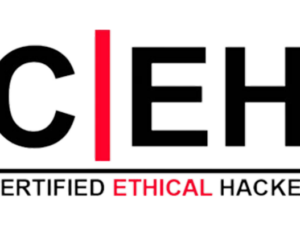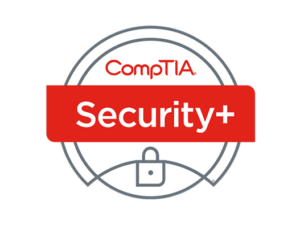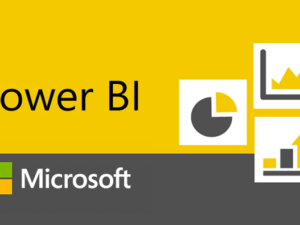Certs Learning’s Docker Certification course will help you master the key concepts of Docker and how data can be containerized into a single or multiple containers, architecture of Docker, containerization and various operations performed on it. You will also learn about Docker Hub and ways to create a Docker Image. This course also introduces you to several tools that leverage Docker to ease application deployment, continuous integration, service discovery, and orchestration. Finally, learn to deploy various Container based Applications on the Cloud.
Docker Training and Certification
- Description
- Curriculum
- FAQ
- Reviews

Docker is the world’s leading software container platform, used by Developers to eliminate “works on my machine” problems while collaborating on code with co-workers. Operators use Docker to run and manage apps side-by-side in isolated containers to get better compute density. Enterprises use Docker to build agile software delivery pipelines to ship new features faster, more securely and with confidence for both Linux and Windows Server apps.
Docker is an open platform for developers and sysadmins to build, ship, and run distributed applications. Docker consists of Docker Engine, a portable, lightweight runtime and packaging tool, and Docker Hub, a cloud service for sharing applications and automating workflows, Docker enables apps to be quickly assembled from components and eliminates the friction between development, QA, and production environments. As a result, IT can ship faster and run the same app, unchanged, on laptops, data center VMs, and any cloud.
At the end of Docker Course you will be able to :
- Learn basics of Docker and run a basic hello world in Docker
- Discuss containerization and various operations performed on it
- Introduce yourself to the Docker File and Docker Hub and how to create Docker images
- Discuss in detail about the configuration of the Docker daemon
- Learn the various networking mechanisms available in Docker
- Introduce several tools that leverage Docker to ease application deployment, continuous integration, service discovery, and orchestration
- Learn to deploy various Container based Applications on the Cloud
This Docker Certification Training is designed for the IT professionals who want to pursue a career in Docker. This Docker course is a best fit for:
- Systems Admins
- Developers
- Testers
- Solutions Architect
- Release Engineers
- Cloud Professionals
The pre-requisites for this course includes : Good Knowledge and Hands-on experience with Linux. You don’t need to be a wizard at the command line, but you should be familiar with how to open your favorite shell or terminal, and run basic commands in that environment. It helps (but isn’t required) to know how to navigate a directory tree, manipulate files (move, copy, edit, save, read), list running processes, and so forth.
If you wish to brush-up Linux skills, Certs Learning offers you a complimentary self-paced course, i.e. “Linux Fundamentals for Docker” when you enroll in Docker Training and Certification course.
-
1Overview of Docker
Goal : Introduces Docker to readers, the core concepts and technology behind Docker. Learn in detail about container and various operations performed on it.
Objectives : Upon completing this lesson, you should be able to: Introduce Docker and state its benefit over VM, Get a brief idea about Architecture of Docker and various terminology associated with it, Run Hello World in Docker, Describe what is Container in Docker, why to use it, and its various scopes, Create, start, stop and remove containers, Share, copy, and backup your data running in a container.
Topics : Shipping Transportation Challenges, Introducing Docker, Architecture of Docker, Understanding images and containers, Running Hello World in Docker, Introduction to Container, Container Life Cycle, Sharing and Copying.
Hands on : Searching for images in docker repository, Pulling images from docker repository, Executing docker images pulled from repository, Create, Start, Stop and Remove Containers, Sharing Data in your Docker Host with Container, Sharing Data between the Container, Copying Data to and from Container.
-
2Image Creation and Sharing
Goal : This module introduces the Dockerfile and Docker Hub and shows how to build, tag or commit an image. Run your own Docker registry and set up automated builds. At the end of this module, learn how to create Docker images and share them privately or publicly.
Objectives : At the end of this lesson, you should be able to: Create images by starting a container using a base image and interactively make changes to it, Create a Dockerfile that will let Docker build the image automatically, Share your image using Docker Hub deploy your own Docker images registry and set up your own automated build, At the end of this module, write Dockerfiles for your various application services and share them through a hosted service like the Docker Hub or through your own Docker registry.
Topics : Base Image, Docker File, Working with containers, Optimization of Docker File, Publishing Image on Docker Hub, Private Registry.
Hands on : Saving Images and containers as Tar File for Sharing, Starting a container using a Base Image, Writing a Docker File, Use docker-commit to save the changes made, Import and Export a container in a tarball/tarfile, Learn to use save and load command, Learn to use Tags with image, Publishing Image to Docker Hub, Running a private registry.
-
3Docker Ecosystem
Goal : This module introduces several tools that leverage Docker to ease application deployment, continuous integration, service discovery, and orchestration. As an example, you will find recipes about Docker Compose and Docker Swarm.
Objectives : Learn how to use Docker Compose to create a WordPress site, start containers on a Cluster with Docker Swarm and finally manage them locally using Kitematic UI and through Docker UI
Topics : Introduction to Docker Ecosystem, Docker Compose, Docker Swarm, Managing Containers, Running Containers.
Hands on : Using Docker Compose to create a WordPress site, Starting Containers on a Cluster with Docker Swarm, Managing Containers locally using Kitematic UI, Managing Container through Docker UI
-
4Docker Configuration, Developing and Networking
Goal : This module covers the configuration of the Docker daemon, especially security settings and remote access to the Docker API. You will learn a few basic problems, like compiling Docker from source, running its test suite, and using a new Docker binary. A few recipes provide better insight on Linux namespaces and their use in containers. Finally, you will know about the basics of networking.
Objectives : At the end of this lesson, you should be able to: Learn about the configuration of the Docker daemon, especially security settings and remote access to the Docker API, Learn how to change the underlying storage driver that provides a union filesystem to support Docker images, Learn the basics of Docker Networking.
Topics : Managing and Configuring Docker Daemon, Introduction to nsenter, Introduction to runc, Secure Remote Access, Introduction to Docker Networking, Network Types.
Hands on : Start, stop, restart and configure Docker Daemon, Build and compile Docker Binary from the source, Run Docker Test suite for Docker Development, Use docker-py to access Docker Daemon Remotely.
-
5Docker Networking Implementation and deploying to Cloud
Goal : Learn the networking mechanisms in Docker. Understand how to get containers’ IP addresses and how to expose a container service on a specific host port. Learn about linking containers, and how to use nondefault networking configurations. Concepts such as network namespaces, using an OVS bridge, and GRE tunnels are presented to lay a strong foundation for container networking. This module also presents you the recipes to show how to access a Docker host on Amazon AWS. The module also introduces to one of the new cloud service that use Docker: the AWS Elastic Container Service (ECS).
Objectives : At the end of this lesson, you should be able to: Learn about basic concepts that use the default Docker networking configuration, Learn about some Docker commands that let you find the IP addresses of your containers, Establish linking in the containers, Configuring Docker Daemon IP Tables and IP Forward settings, Set up custom bridge for Docker, Establish connection among the containers from different host without port mapping.
Topics : Introduction to Docker Networking: Hands-on, Network Types: Hands-on, Network Namespace, Docker Container Networking, Custom Bridge, Weave Network, Accessing Public Cloud to run Docker, Docker Host on AWS EC2, Docker Host on AWS using Docker Machine, EC2 Container Service.
Hands on : Finding IP address of the container, Access a service running in a container over the network, Linking Containers in Docker, Configuring Docker Daemon IP Tables and IP Forward settings, Setting up custom bridge for Docker, Establishing connection among containers from different host without port mapping, Docker Host on AWS.







